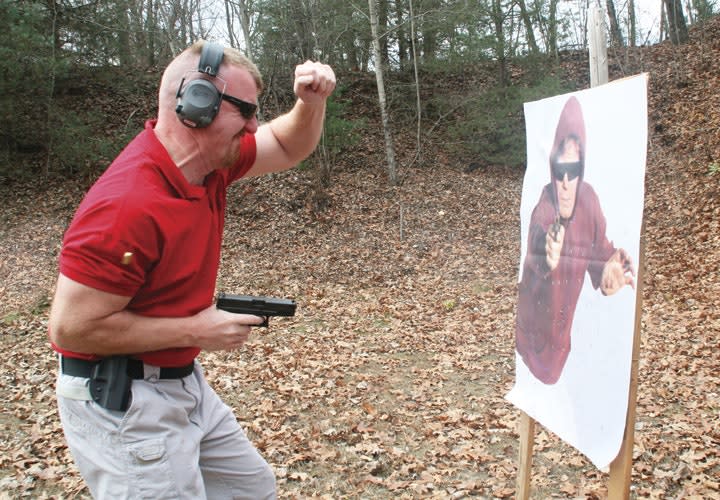If you train an officer to always use sights, then what happens when a loss of near vision kicks in, which happens under stress, and the officer can't focus on the sights at less than four feet? And do you really think you're going to be focused on your sights when someone is shooting at you over his or her shoulder from less than a foot away? Of course you won't; you won't even use-the-front-sight-only shooting method that is so often touted by those who refuse to teach point shooting skills to their officers.
How about when tunnel vision kicks in, where the officer's vision is narrowed dramatically and most often focused on the source of the threat, which is the weapon? It's one of your instinctive responses when your fight-or-flight instinct kicks in is that you will naturally focus on the source of the threat, which is why so many people in gunfights are shot in the hands that held their weapons.
The second biggest argument that's thrown out there by the anti-point shooting crowd is liability. You are liable for every round you send down range, whether you're using your sights or point shooting. Those who have no understanding, or refuse to even take a look at any point shooting training, think that point shooters are just "spraying and praying." Although point shooting is easy to learn because it plays into natural body mechanics and therefore can be used under stress, there's a little more to it than just sticking your gun out there and pulling the trigger.
When confronted with this question of liability you should ask yourself about your own firearms training. Does your current firearms training reflect the realities of the street? Are you teaching close-quarters shooting skills, shooting on the move, weapon retention shooting, the shove and shoot drill, and any other close-quarter skills that reflect the reality of what the officers in your department face on the street? There is more liability in not teaching point shooting than there is in teaching it.
Gun grabs are a reality of the street and a number of departments train weapon retention skills. If you're teaching weapon retention shooting tactics, or the shove and shoot drill, or close-quarter hip shooting skills, you are teaching point shooting—without even realizing it. When the "liability question" comes up from someone who wants to argue against point shooting, the first question I ask back is: Are you doing any weapon retention shooting?











